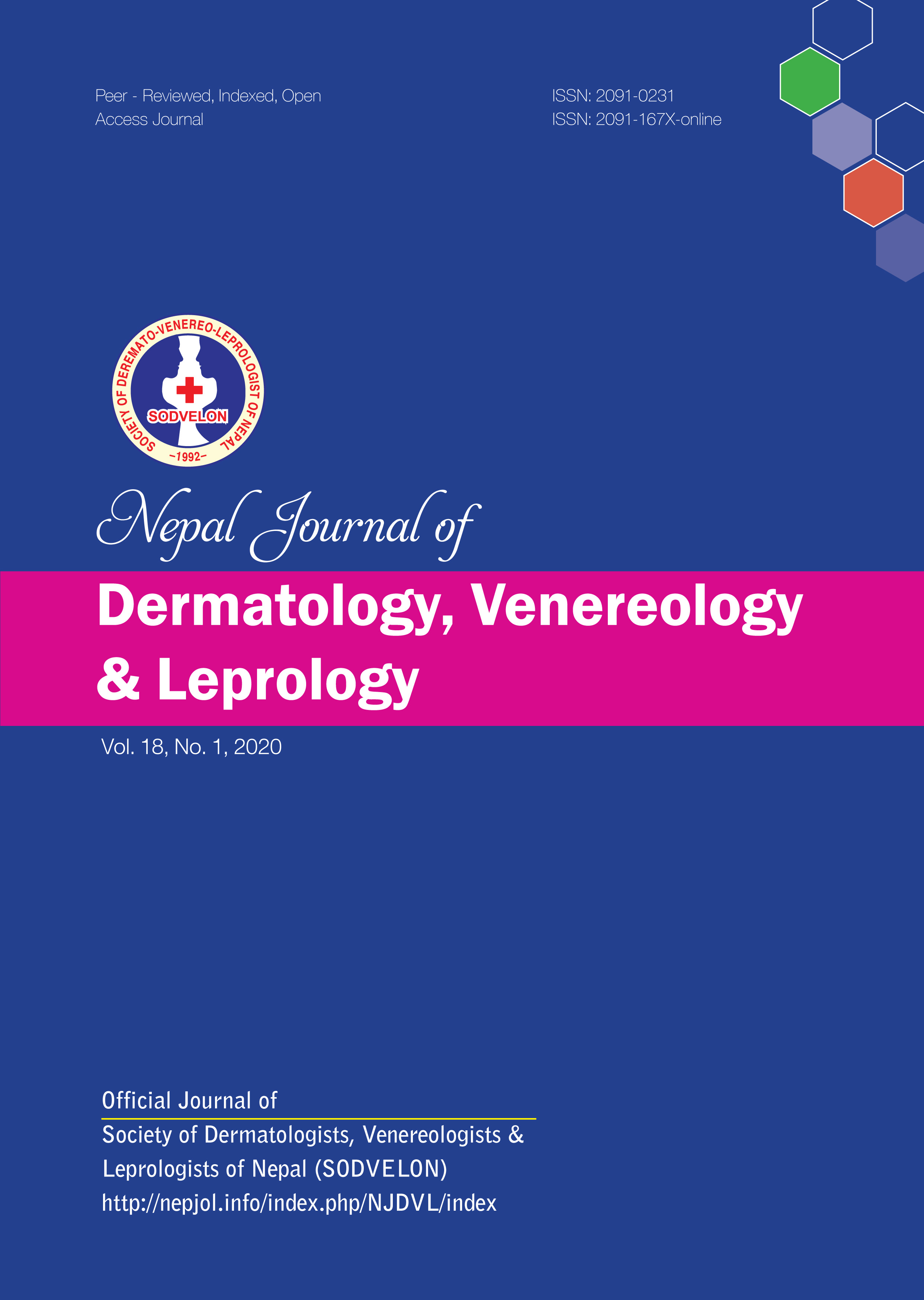Antifungal Susceptibility Pattern of Non - Dermatophytic Fungi Causing Onychomycosis
DOI:
https://doi.org/10.3126/njdvl.v18i1.27120Keywords:
Antifungal Agents, Fluconazole, Itraconazole, Onychomycosis, TerbinafineAbstract
Introduction: Non-dermatophytic molds (NDM) are filamentous fungi or yeast, commonly found in nature as saprophytes and plant pathogens. The incidence of onychomycosis due to NDM is 1.45 – 16.6%. NDMs are usually resistant to conventional antifungal treatment.
Objective: To know the anti-fungal susceptibility pattern of non-dermatophyte fungi causing onychomycosis.
Materials and Methods: A prospective hospital based cross-sectional study was done on non - dermatophytic isolates from patients with clinical suspicion of onychomycosis. All non – dermatophytic isolates were subjected to anti-fungal susceptibility against terbinafine, itraconazole, fluconazole and griseofulvin by micro broth dilution method.
Results: NDM were isolated in 20.2% cases of clinically suspected onychomycosis, among which Fusarium species was the most common followed by Aspergillus species and Candida species. MIC50 (Mean Inhibitory Concentration) for overall non - dermatophytic isolates for terbinafine, itraconazole, fluconazole and griseofulvin was 0.25μg/mL, 0.5μg/mL, 32μg/mL and 2μg/mL respectively and the order of sensitivity was Itraconazole (74.7%) > terbinafine (68%) > Fluconazole (60%) > Griseofulvin (51.6%) of the study samples. For Fusarium species, the sensitivity for terbinafine was (73.5%) > itraconazole (67.6%) > fluconazole (64.7%) and griseofulvin (64.7%). For Aspergillus species, the sensitivity for itraconazole was 79.1% > fluconazole (58.3%) > terbinafine (54.1%) > griseofulvin (50%). For Candida species, the sensitivity was fluconazole (83.3%) > itraconazole (75%) > terbinafine (41.6%), while no candida species was found sensitive to griseofulvin.
Conclusion: Non-dermatophytes play a significant role in onychomycosis. On in vitro estimation, Itraconazole was the most sensitive drug, followed by terbinafine, fluconazole and griseofulvin.
Downloads
Downloads
Published
How to Cite
Issue
Section
License
Copyright on any research article is transferred in full to Nepal Journal of Dermatology, Venereology & Leprology upon publication. The copyright transfer includes the right to reproduce and distribute the article in any form of reproduction (printing, electronic media or any other form).




